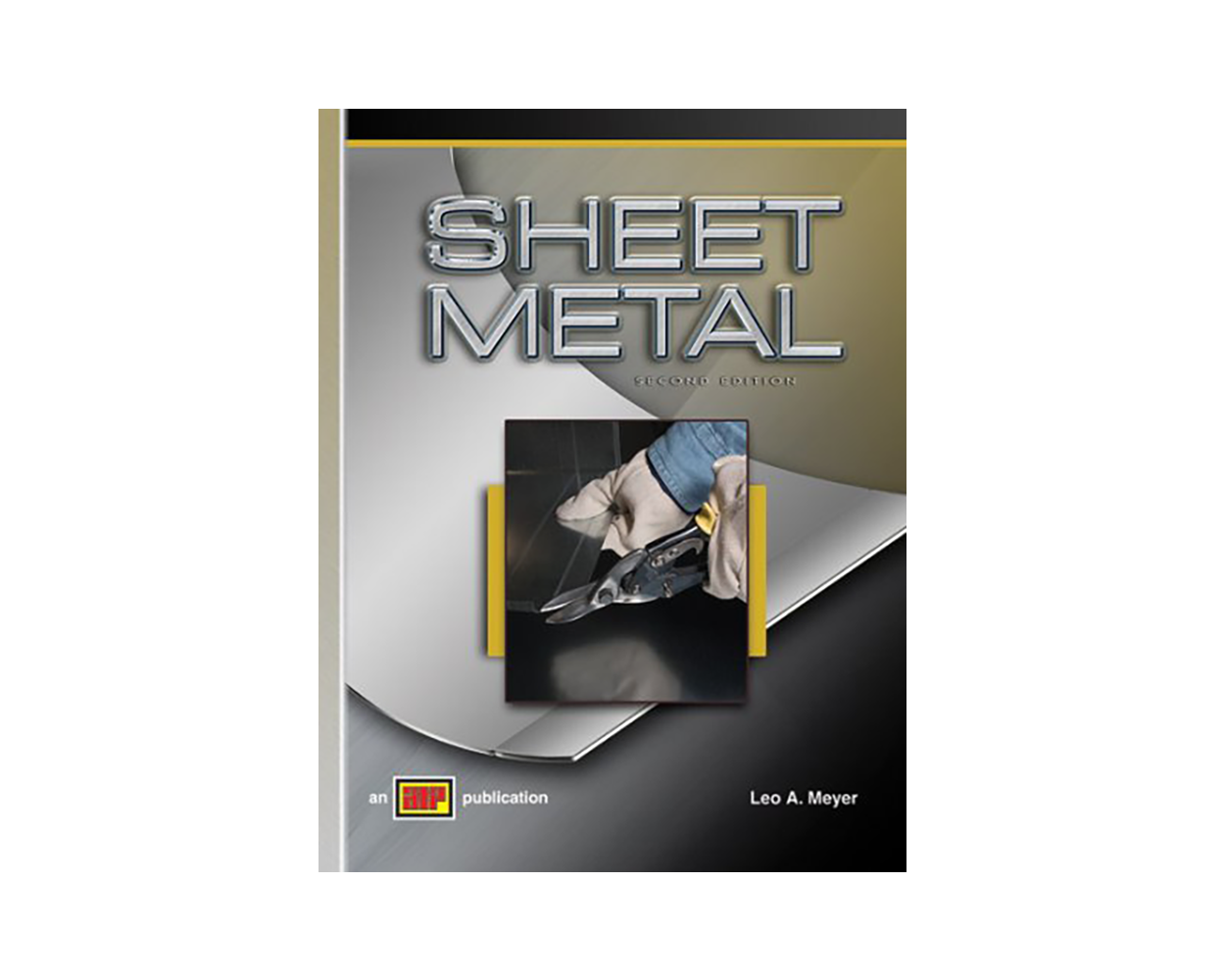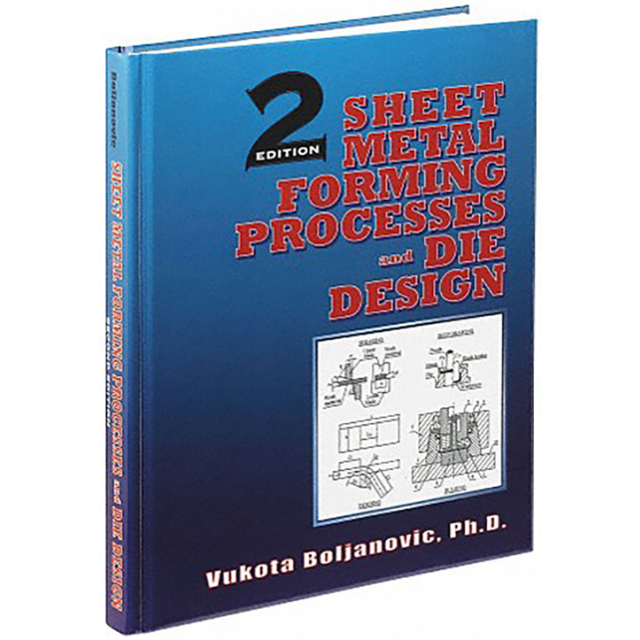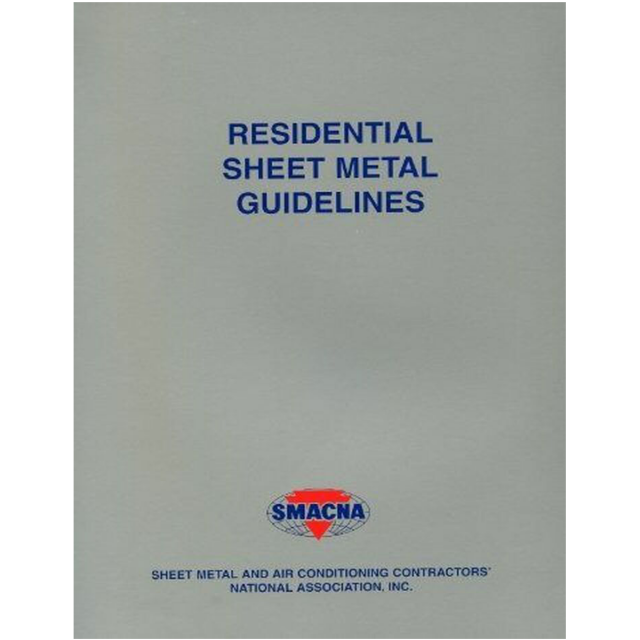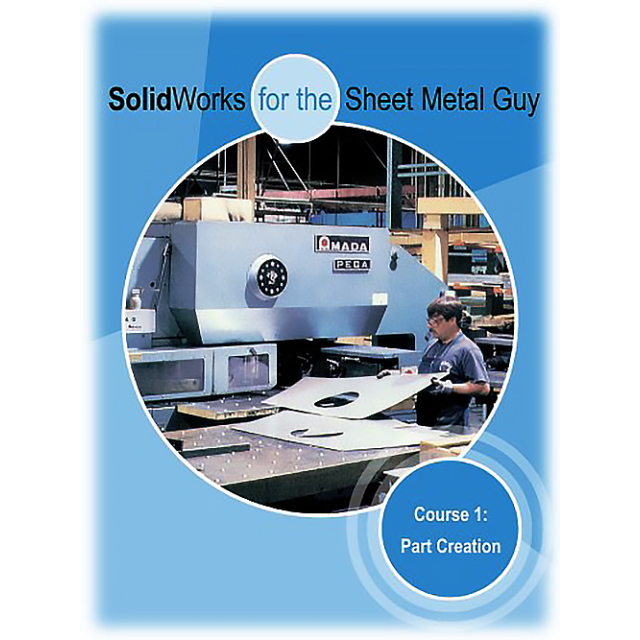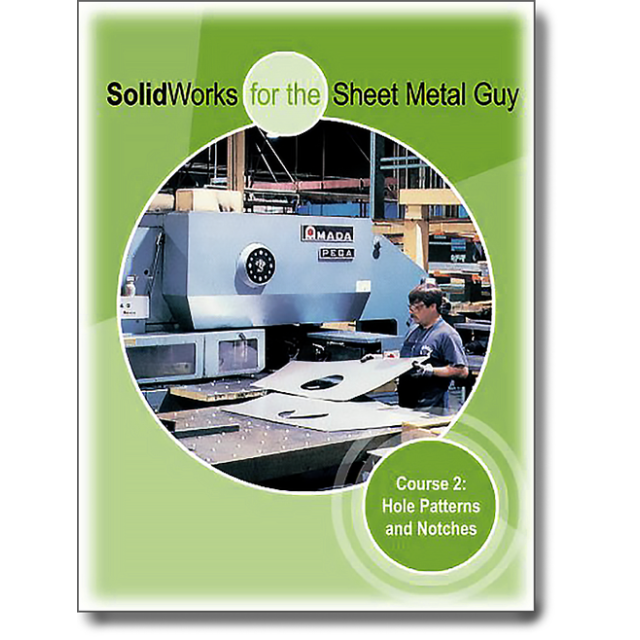Sheet Metal 2nd Edition by Leo A. Meyer
It can serve as a useful training tool and reference for students, apprentices, and professionals in the trade. It also blends basic principles with contemporary tools and technology. The text is written concisely with large, two-color illustrations used to emphasize key points.
The first six chapters provide an introduction to safety, tools, machinery, materials, and fasteners used in the sheet metal trade. The next six chapters cover cutting, forming, and joining methods. Chapters 13 through 17 cover basic drafting principles and pattern development. Chapter 18 covers specification, layout, and fabrication of sheet metal used in the building trades. Chapter 19 covers the short method of pattern development.
Hands-on projects show and explain how to punch, drill, rivet, fold edges, make seams, turn burrs, raise, notch, crimp, bend, groove, solder, and cut.
Table of Contents
Sheet Metal Careers
Sheet Metal Working Tools and Machinery
Sheet Metal Shop Safety
Sheet Metal Types
Materials of the Sheet Metal Trade
Fasteners for Sheet Metal
Using Patterns and Cutting Metal
Punching, Drilling, and Riveting
Folding Edges and Making Seams
Turning, Burring, and Raising
Forming, Crimping, Beading, and Grooving
Soldering
Drawing for Pattern Drafting
Making and Notching Simple Patterns
Parallel Line Development
Triangulation
Radial Line Development
Sheet Metal in the Building Trades
Short Method of Pattern Development
Supplementary Projects
Appendix
Glossary
Index
| Price | $93.00 |
|---|---|
| Customer Service | Customer ServiceWe're Here To Help Call us anytime during our customer service hours... Monday through Friday - 8:30 am to 4:30 pm (Pacific) Order Questions: TOLL FREE, 800-273-7375 (Outside the U.S. call 818-887-7828). Our Address: 8001 Canoga Avenue Canoga Park, CA 91304 US Phone: 800-275-2665 E-mail: sales@buildersbook.com
|
| Description | Sheet Metal is an introduction to the fundamentals of layout, cutting, forming, and fabrication of sheet metal. It can serve as a useful training tool and reference for students, apprentices, and professionals in the trade. It also blends basic principles with contemporary tools and technology. The text is written concisely with large, two-color illustrations used to emphasize key points. The first six chapters provide an introduction to safety, tools, machinery, materials, and fasteners used in the sheet metal trade. The next six chapters cover cutting, forming, and joining methods. Chapters 13 through 17 cover basic drafting principles and pattern development. Chapter 18 covers specification, layout, and fabrication of sheet metal used in the building trades. Chapter 19 covers the short method of pattern development. Hands-on projects show and explain how to punch, drill, rivet, fold edges, make seams, turn burrs, raise, notch, crimp, bend, groove, solder, and cut. Table of Contents Sheet Metal Careers Sheet Metal Working Tools and Machinery Sheet Metal Shop Safety Sheet Metal Types Materials of the Sheet Metal Trade Fasteners for Sheet Metal Using Patterns and Cutting Metal Punching, Drilling, and Riveting Folding Edges and Making Seams Turning, Burring, and Raising Forming, Crimping, Beading, and Grooving Soldering Drawing for Pattern Drafting Making and Notching Simple Patterns Parallel Line Development Triangulation Radial Line Development Sheet Metal in the Building Trades Short Method of Pattern Development Supplementary Projects Appendix Glossary Index |

